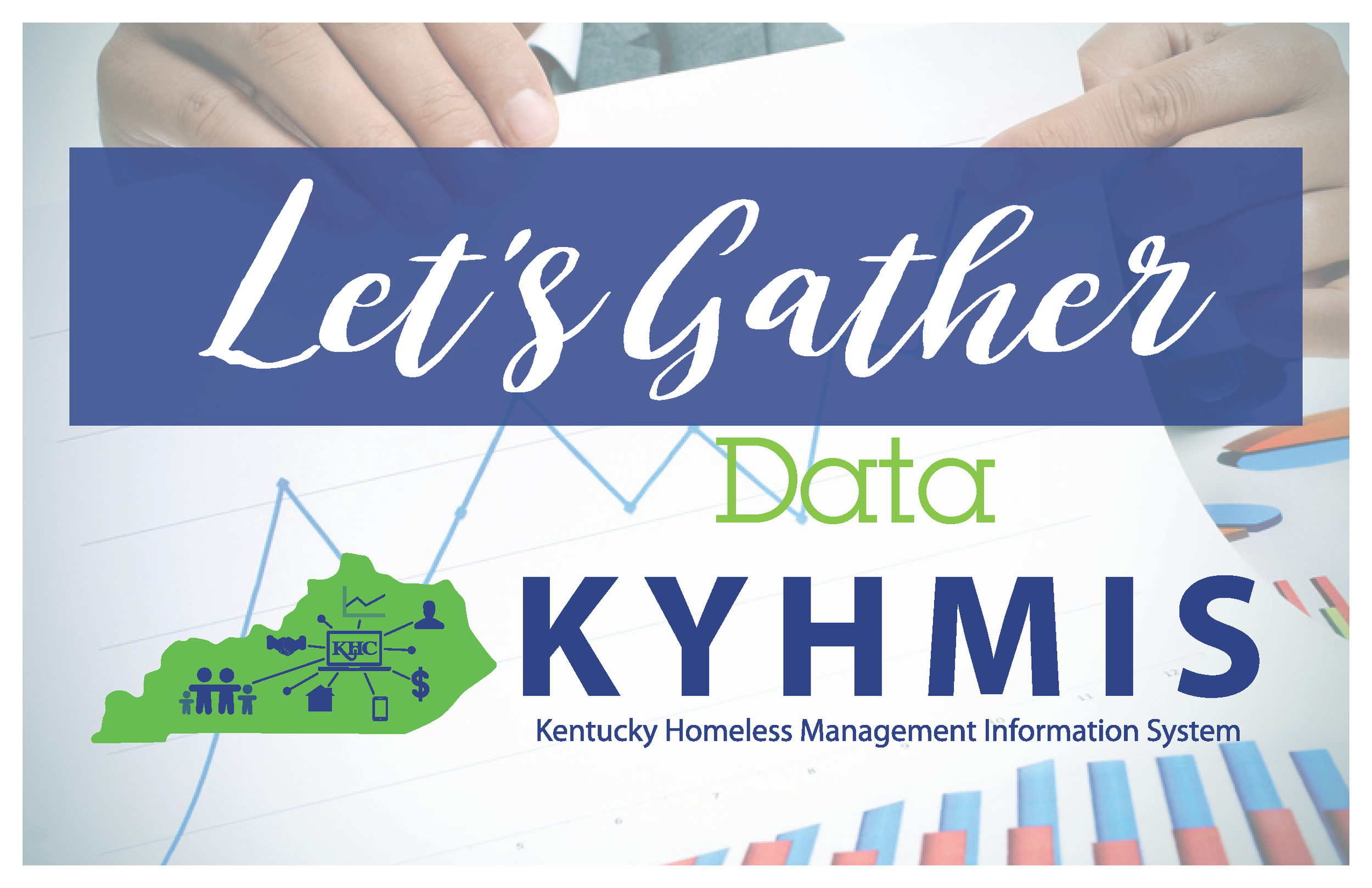Data is everywhere. Data is complex. Data can be confusing, becoming a four-letter word inducing anxiety, but data is so important as the foundation for making the best decisions, especially when administering housing solutions for families in the most need of shelter solutions and stabilization.
The Four-Letter Words That Aid in Ending Homelessness
Data is everywhere. Data is complex. Data can be confusing, becoming a four-letter word inducing anxiety, but data is so important as the foundation for making the best decisions, especially when administering housing solutions for families in the most need of shelter solutions and stabilization.
Data is a four-letter word that everyone approves of in the Housing Contract Administration department at Kentucky Housing Corporation, which administers homeless and special housing needs addressing critical issues to stabilize fellow Kentuckians and families. Without the Homeless Management Information System (HMIS – yes, another four-letter word), our data would not be as accurate or robust as it is today to aggregate information on our homeless population to make better informed decisions to provide the best housing assistance solutions.
What is the Homeless Management Information System?
The Kentucky HMIS is a requirement set forth by the United States Department of Housing and Urban Development (HUD) and other federal partners, such as the United States Department of Veteran Affairs (VA) where those receiving funding to aid in homelessness (Continuum of Care, Emergency Solutions Grant, etc.) can aggregate data on the homeless populations served in the United States. The HMIS software houses data on a client-level basis on characteristics and service needs of those individuals who are experiencing homelessness. One important outcome of a HMIS is the ability to produce an unduplicated count of individuals experiencing homelessness in the United States.
Information collected in HMIS, which is critical in assessing service needs, includes but is not limited to:
-
Income and Sources
-
Non-Cash Benefits
-
Health Insurance
-
Physical Disability
-
Developmental Disability
-
Chronic Health Condition
-
HIV/AIDS
-
Mental Health Problem
-
Substance Abuse
-
Domestic Violence
-
Contact
-
Date of Engagement
-
Bed-Night Date
-
Housing Assessment Disposition
-
Name
-
Social Security Number
-
Date of Birth
-
Race
-
Ethnicity
-
Gender
-
Veteran Status
-
Disabling Condition
-
Project Start Date
-
Project Exit Date
-
Destination
-
Relationship to Head of Household
-
Client Location
-
Housing Move-in Date
-
Living Situation

Reporting Requirements for HMIS
Recipients with HUD funding received through CoC homeless assistance grants (e.g., Supportive Housing Program, Shelter Plus Care, Section 8 Moderate Rehabilitation Single Room Occupancy Program, CoC Program) are required to submit an Annual Performance Report (APR) electronically to HUD every operating year. An APR consists of aggregate data on demographics, data quality measures, number of persons served, households served, disability information, domestic violence status, prior living situation, income information, and outcome destination where the clients ultimately ended up after services.
Recipients with HUD funding received through the Emergency Solutions Grants (ESG) Program are required to submit a Consolidated Annual Performance and Evaluation Report (CAPER) to HUD annually. The Consolidated Annual Performance and Evaluation Report (CAPER) is an annual requirement that is part of a larger Consolidated Plan, which is updated every five years. The CAPER data, which is pulled from HMIS, has similar information that is reported in the CoC APR.
The Longitudinal Systems Analysis (LSA) report, produced from a CoC’s HMIS and submitted annually to HUD provides HUD and Continua of Care (CoCs) with critical information about how people experiencing homelessness use their system of care.
System Performance Measures may be one of the most critical reports that is completed on an annual basis. This is because System Performance Measures consider all HMIS participating agencies in the local homeless response system, therefore, you can see overall how the system is working together and not just how an individual program is working. System Performance Measures are a set of seven unique measures that analyze outcomes of a homeless response systems performance. The intent of these selection criteria is to encourage CoCs, in coordination with ESG Program recipients and all other homeless assistance stakeholders in the community, to regularly measure their progress in meeting the needs of people experiencing homelessness in their community and to report this progress to HUD.
Participation in Data Entry into HMIS
Participation in HMIS can be a tricky subject considering that only partners who receive federal funding are required to enter their homeless service data into HMIS. There are many local agencies, churches, and community groups who serve the homeless population in Kentucky but are not getting federal funds, therefore, the additional time it takes to enter data into the HMIS is not happening. We are lucky to have four agencies currently who are not federally funded who are working within the HMIS to help ensure the information we submit to HUD about our state of homelessness in Kentucky is more accurate.
New Campaign—"Data Made Easy”
We have launched a new campaign, Data Made Easy, which includes customizations to the HMIS and report assistance, as well as lower costs to the non-funded agencies should they choose to participate in entering their data into HMIS. HUD has a goal of having 100 percent of non-funded agencies participating in HMIS. Although there is no set timeframe for reaching this goal, HUD continuously uses participation rate of HMIS to help make their funding decisions regarding states receiving homeless assistance monies.
Customizable reports allow agencies to spend less time on data and more time meeting our missions and serving our clients.

"The Kentucky HMIS benefits all Kentuckians, from those who need housing assistance and services to public officials. Stronger Kentuckians equal stronger communities."
How is HMIS data used?
The data entered into HMIS is used to analyze the current state of our homeless response system, and how it is being used by those individuals who are experiencing homelessness. More than analyzing the data from the HMIS we use HMIS data at Kentucky Housing Corporation to make decisions on where money should be placed in communities throughout the Balance of State where we can house the most vulnerable populations.
For example, one of the ways we use our HMIS data to impact those we serve is through Coordinated Entry. Coordinated Entry prioritizes individuals needing housing based on a VI-SPDAT score. The VI-SPDAT (Vulnerability Index - Service Prioritization Decision Assistance Tool) is a survey administered both to individuals and families to determine risk and prioritization when aiding individuals experiencing homelessness and at-risk of homelessness persons. The data collected through this survey is composed into an analysis tool which is used to match housing resources available in the Kentucky BOS homeless response system to those experiencing homelessness. The data ensure we are housing individuals with the highest need first.
Another way we are using our data to impact communities is in the Northern Kentucky area where we’ve focused our attention on individuals who are experiencing homelessness and where they last had stable housing. This information is being used as an informative look at counties where homelessness is originating. With that information policy makers can look at the available resources in comparison to the need to make sure housing funds are allocated in the best possible way to aid in ending homelessness in the area.
The Kentucky HMIS benefits all Kentuckians, from those who need housing assistance and services to public officials. Stronger Kentuckians equal stronger communities.

